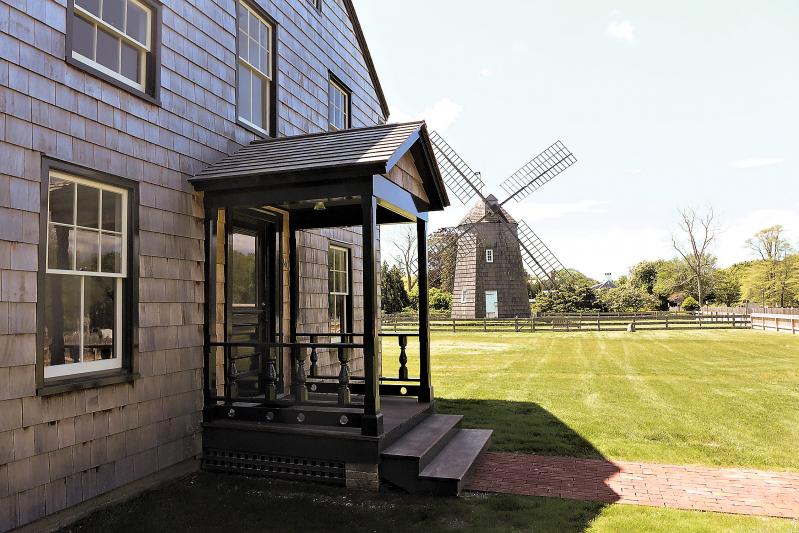Almost five years after the Town of East Hampton purchased the five-acre Gardiner home lot on James Lane in the village, the Gardiner Mill Cottage Gallery, which shares the property with the 1804 Gardiner windmill, will open on June 7, with a reception from 4 to 6 p.m. The inaugural exhibition, “Picturing Old East Hampton: The Beginnings of an Art Colony,” will include approximately 50 paintings by artists who worked on the East End during the late-19th and early-20th centuries.
While part of the cottage dates from the 18th century, the structure has been restored to its appearance in the late 1880s, when Jonathan Thompson Gardiner renovated it by removing nonhistorical additions, relocating it to the front of the property, and adding a new saltbox, all with the intention of renting it during the summers.
“In the late 1880s, the whole summer colony was growing, and a lot of local people built cottages in order to rent them,” said Robert Hefner, the director of historic services of the Village of East Hampton. Percy Moran, an artist and the nephew of Thomas Moran, leased the house from 1902 to 1916.
East Hampton Town bought the property in October 2014 from Bill Gardiner with Community Preservation Fund money, and the village is responsible for operating and maintaining it.
The idea of turning the cottage into a gallery developed out of conversations among Terry Wallace of East Hampton’s Wallace Gallery, which specializes in 19th-century American art, Kathryn Curran, the executive director of the Robert David Lion Gardiner Foundation, Richard Barons, the chief curator and former executive director of the East Hampton Historical Society, and Mr. Hefner.
“We had a whole lot of ideas for the Gardiner Cottage,” Mr. Barons said. “It was when we were looking at some of the things Terry had for another exhibit we were working on, that’s when we just thought, ‘It’s an artist’s studio, let’s focus on works created by artists here during the art colony years.’ ”
“It’s a perfect use,” said Mr. Hefner. “And the Gardiner home lot is a historic landscape itself, it’s right there where a lot of the painters were working.”
Of the works in the collection, 10 were purchased through the Gardiner Foundation, five were donated by the Hilaria and Alec Baldwin Foundation, and five were given by Mr. Wallace. At least half of the works in the initial installation, if not more, are on loan from other sources.
“The whole concept is to examine the early artists’ colony,” said Mr. Barons. “So we’ll be borrowing things from Guild Hall, from a number of local collectors, and from the library. Many of these things have probably not been seen in ages.”
Mr. Barons, who will share curatorial responsibility with Mr. Hefner, said that while one gallery will probably be devoted to works from the village’s collection and the historical society, the main galleries might mount temporary loan exhibits that focus on specific themes.
Mr. Hefner noted that, while the house has the form of a saltbox, certain fanciful touches, such as the front porch and the big balusters, were all 1887 early summer colony touches. Mr. Hefner oversaw the architectural plans and specifications for the restoration, and
Drew Bennett handled the mechanical and structural work.
“Although part of it has the timber frame of an 18th-century house, the inside is a late-19th century cottage,” Mr. Hefner said, adding that it is from the same period as the Moran Studio, which opened on Main Street last July after a five-year restoration.
“Besides the visual stimulation of these artworks, they are also important as historic pictorial images, so you get the flavor of what the area looked like then,” said Mr. Barons. “No matter what anyone says about the Hamptons — and people shouldn’t complain about the word, since it goes back to the 1870s — the thing that is most important is how many of these scenes look the same now as they did then.”
The cottage and the Gardiner Mill will be open on Saturdays and Sundays from 1 to 4 p.m., to be staffed by the same docents who operate Home, Sweet Home, another museum in the village.




